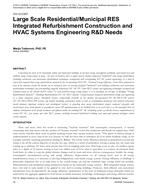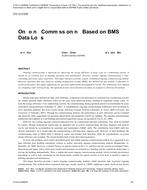-
-
Available Formats
- Options
- Availability
- Priced From ( in USD )
-
Available Formats
-
- Immediate download
- $16.00
- Add to Cart
Customers Who Bought This Also Bought
-

CH-12-C007 -- Large Scale Residential/Municipal RES Integ...
Priced From $16.00 -

CH-12-C023 -- A Case Study: Using Integrated Approach to ...
Priced From $16.00 -

CH-12-C039 -- Ongoing Commissioning Based on BMS Data Logs
Priced From $16.00 -

CH-12-C028 -- Regression Models for Estimating Monthly En...
Priced From $16.00
About This Item
Full Description
This paper presents a comprehensive simulation study about the impact of a combined fixed exterior-movable interior overhang/light-shelf system on the thermal performance of buildings, in conjunction with controlled roller shades in the view aperture (main window). This advanced system eliminates glare and protects from excessive solar gains when necessary, while it still allows natural light into the building. The study focuses on the impact of the following parameters: exterior overhang geometry, position and surface reflectance; interior light-shelf position, transmittance, reflectance and tilt angle; and roller shade control modes and solar-optical properties. An analytical thermal network (heat balance) approach, solved explicitly with the finite difference method is used to quantify the impact of the above parameters on the building's thermal loads throughout the year. A parametric analysis of the studied variables allows for selection of overhang and light shelf characteristics in order to reduce building energy demand.






